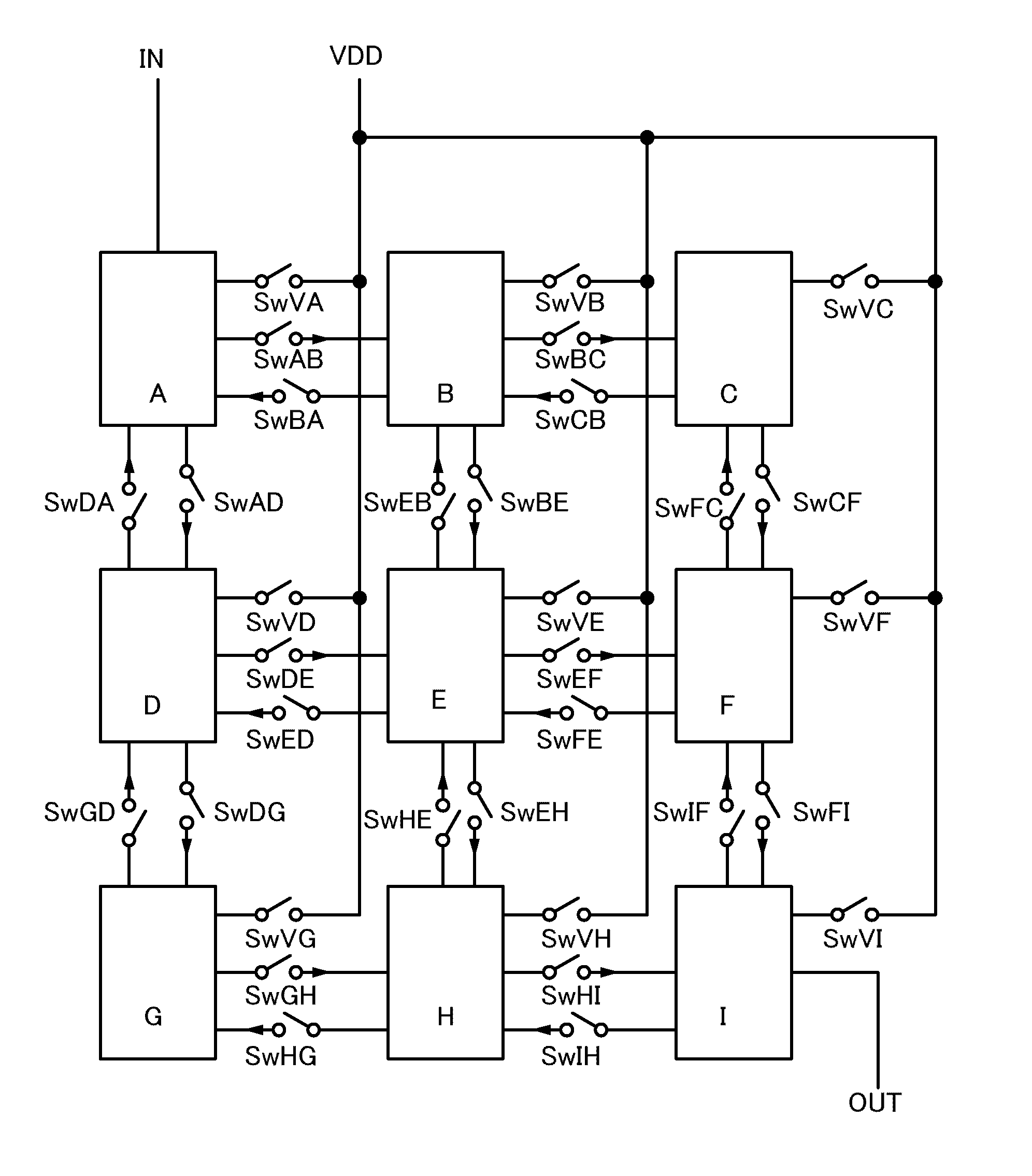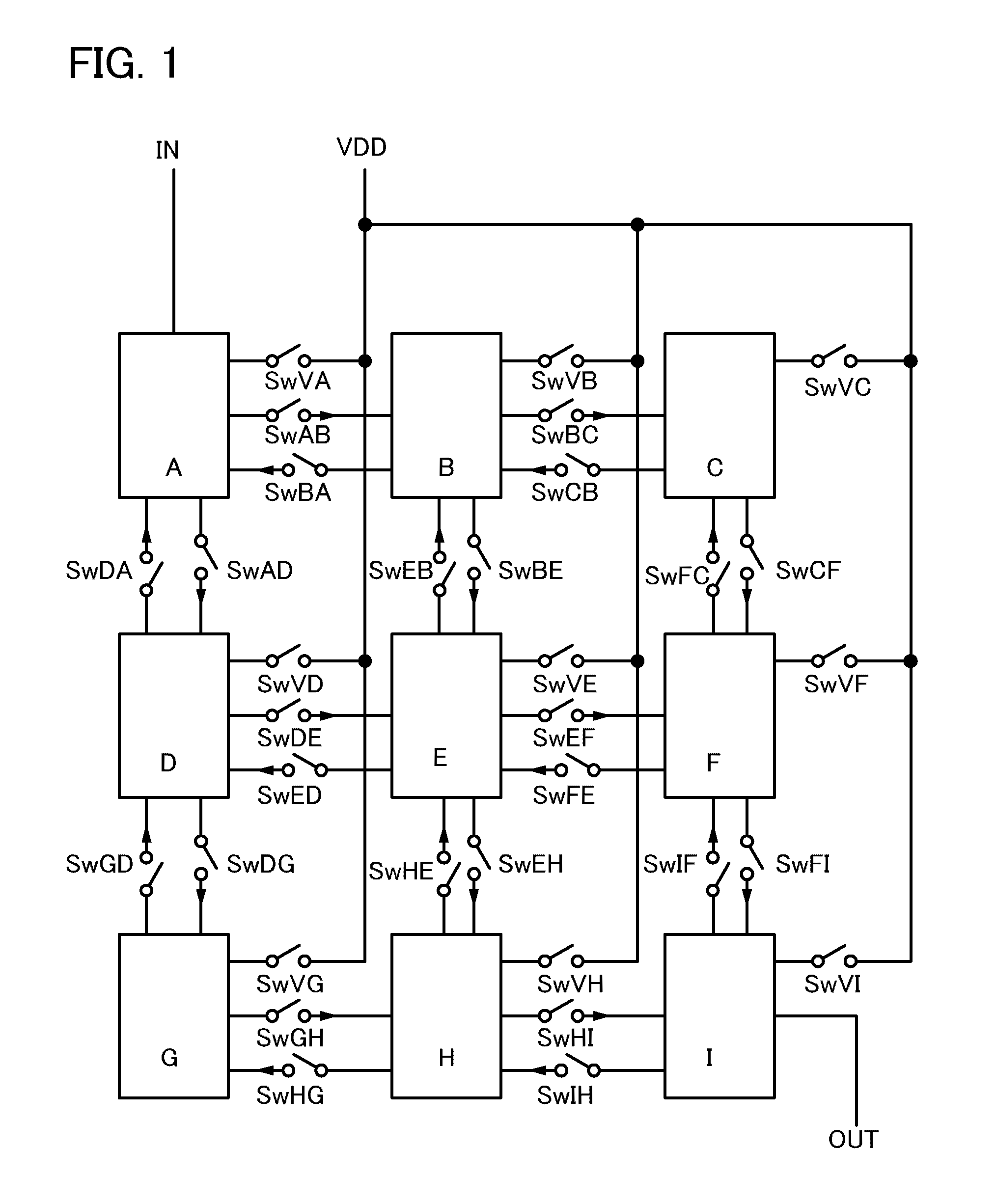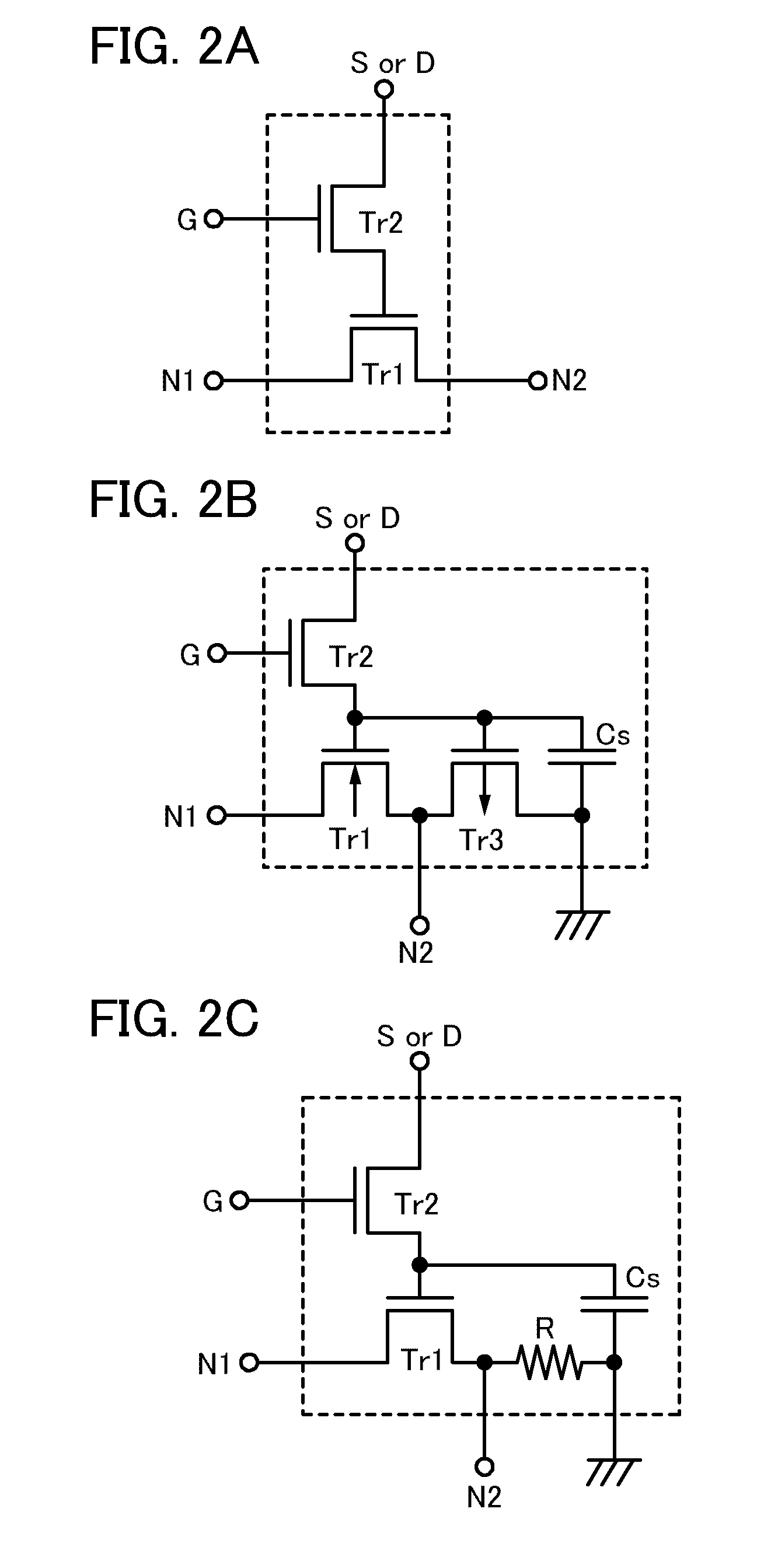Semiconductor device
a technology of semiconductor integrated circuits and capacitors, applied in the direction of power consumption reduction, pulse techniques, instruments, etc., can solve the problems of power consumption, unnecessary power consumption in basic blocks, and power consumption is expected to increase, so as to suppress the degradation of gate insulating films, suppress the number of times of rewriting data, and reduce the effect of power consumption
- Summary
- Abstract
- Description
- Claims
- Application Information
AI Technical Summary
Benefits of technology
Problems solved by technology
Method used
Image
Examples
embodiment 1
[0045]In this embodiment, a structure and operation of a semiconductor device according to one embodiment of the present invention will be described.
[0046]A structure of a semiconductor device according to one embodiment of the present invention is illustrated in FIG. 1, as an example. The semiconductor device illustrated in FIG. 1 is provided with nine basic blocks A to I, programming cells SwAB to SwIH configured to control connections between the basic blocks A to I, and programming cells SwVA to SwVI configured to control the supply of a power supply potential VDD to the basic blocks A to I.
[0047]Note that in FIG. 1, a programming cell configured to control a connection between an output terminal of the basic block A and an input terminal of the basic block B is denoted as SwAB, for example. On the other hand, a programming cell configured to control a connection between an output terminal of the basic block B and an input terminal of the basic block A is denoted as SwBA.
[0048]I...
embodiment 2
[0093]In Embodiment 1, the example in which a given basic block can be connected to up to four adjacent basic blocks is described; however, in this embodiment, an example in which a given basic block is connected to eight adjacent basic blocks will be described.
[0094]In a manner similar to that of FIG. 1, a semiconductor device illustrated in FIG. 6 is provided with nine basic blocks A to I, programming cells which control connections between the basic blocks A to I, and programming cells which control the supply of the power supply potential VDD to each of the basic blocks A to I.
[0095]Unlike FIG. 1, in the semiconductor device illustrated in FIG. 6, the central basic block E can be connected to all the basic blocks except the basic block E, via programming cells SwAE to SwIE and programming cells SwEA to SwEI.
[0096]Note that in FIG. 6, only the programming cells SwAE to SwIE which control connections between the central basic block E and the other basic blocks, the programming cel...
embodiment 3
[0100]A semiconductor device in which a large matrix is formed using basic blocks will be described using an example which is more generalized.
[0101]In this embodiment, attention is paid on a basic block U(n, m) of the n-th row and the m-th column included in the semiconductor device. As illustrated in FIG. 7, around the basic block U(n, m), there are eight basic blocks: U(n−1, m−1); U(n, m−1); U(n+1, m−1); U(n−1, m); U(n+1, m); U(n−1, m+1); U(n, m+1); and U(n+1, m+1). The basic block U(n, m) is connected to these eight basic blocks via programming cells in order to transmit and receive signals.
[0102]In FIG. 8, an example of a specific structure of a programming cell for controlling connections between the basic blocks illustrated in FIG. 7 and a programming cell for controlling the supply of the power supply potential VDD to each basic block is illustrated.
[0103]Note that an example in which the programming cell illustrated in FIG. 2A is used is described in FIG. 8; however, any of...
PUM
 Login to View More
Login to View More Abstract
Description
Claims
Application Information
 Login to View More
Login to View More - R&D
- Intellectual Property
- Life Sciences
- Materials
- Tech Scout
- Unparalleled Data Quality
- Higher Quality Content
- 60% Fewer Hallucinations
Browse by: Latest US Patents, China's latest patents, Technical Efficacy Thesaurus, Application Domain, Technology Topic, Popular Technical Reports.
© 2025 PatSnap. All rights reserved.Legal|Privacy policy|Modern Slavery Act Transparency Statement|Sitemap|About US| Contact US: help@patsnap.com



